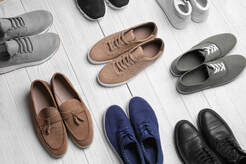
In my mind, we want shoes that are as close to being barefoot as possible, these are those minimalist shoes you often see around. But before you rush out and buy one of these styles of shoe, you need to be careful. If your feet are used to wearing stiff, padded shoes, jumping straight to a minimalist, barefoot style shoe will likely end up in you having sore and cranky feet.
This is where we need to make a wise decision, and this is what this blog post will help you do.
I love this concept of a shoe continuum. At one end we have the barefoot, minimalist style shoe and at the other end we have the stiff, padded, fully supported style of shoe. All of our shoes are going to be somewhere along this continuum.
In my mind we want to be heading towards the minimalist end of the scale, however, as I said earlier, jumping from one end to the other, wont end well. We need to make steps along the way.
I assume that if you are reading this blog you have sore feet or are wanting to improve how your feet are working. Moving down the continuum will take time and some effort on your part to improve how your feet are working, so you can move down the continuum without any issues.
Choosing the right shoe will be a mix of how your feet are currently functioning, but also where you want them to be in the future. So here are the 4 key things to do when buying an ‘ideal’ shoe.
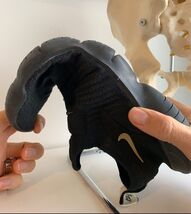
Our feet are designed to bend and move. This movement is what stimulates the joints and nerves in the feet and helps send this information to the brain to tell it how we are contacting the ground. Wearing stiff shoes limits this movement and therefore our brains ‘awareness’ of how we are contacting the ground.
Think of it as wearing foggy glasses. You can still see, but just not clearly. So, our first tip when looking for a new pair of shoes, is choose one that has more flex or bend to it than your current pair.
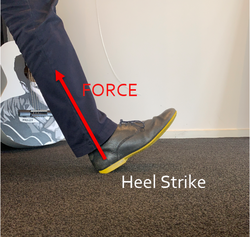
It may sound counter intuitive, but did you know that wearing thick, cushioned shoes can increase the force that goes into our bodies when walking? When we are wearing cushioned shoes, we tend to take longer steps. The outcome of this is that we strike the ground more with the heel and this can lead to increased force being sent into the body. Think about it, if you are barefoot, you would not take the same type of steps. Jamming your heel into the ground will be painful.
Wearing cushioned shoes also 'muffles' the sensory signals going up to the brain like I mentioned in the previous tip.
So, our second tip when looking for new shoes, try choosing one that has less cushioning than your previous pair.
When we are barefoot, there is no height difference between the heel and the forefoot. Most shoes these days have a higher heel than the toes. When looking for a more ‘natural’ style shoe, we want one that has as smaller heel drop as possible.
Why you may ask? Well, when you wear shoes with a heel, our bodies have to compensate. Our pelvis tilts, our shoulders move, and our head moves in order to stay upright.
An example I like to use for this for this is Jenga blocks. If you arrange your Jenga blocks on a flat surface, it is easy to make it stand up vertically nice and straight (this is like being barefoot). Now, if you put a wedge under one side (think heeled shoes) you can still make the blocks stay vertical, but you have make lots of little adjustments all the way up in order to achieve it.
Again, if you have been wearing heeled shoes all your life, do not jump straight to a zero heel drop shoe, choose one that has a smaller heel and over time you can reduce the heel height.
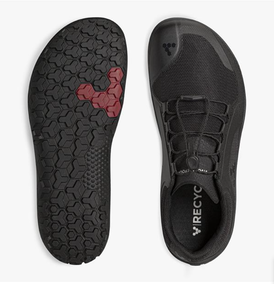
The front of the shoe is called the toe box. Most shoes have a narrowing at the front. The effect of this is that it tends to push your toes towards each other. This can lead to things like bunion formation.
The widest part of a natural human foot should be the toes. In most people though, the widest part is the joints of the toes and the toes themselves are angled inwards.
When choosing a new pair of shoes, try to choose one that is as wide in the front as possible. You can see in the image to the right how wide these Vivobarefoot shoes are. Compare the shape of these shoes to your current shoes, is there a difference?
I have been on this journey myself for a while now and am almost at the point of buying a minimalist style shoe. Hopefully, when I get my next pair of shoes (which will be a minimalist style) I wont have any issues.
If you are wanting to reduce foot pain or just wanting to look after your feet a little better, then making the right footwear choice is important and hopefully these tips have been helpful.
However, if you goal is less foot pain or simply better feet, then you also need to spend some time waking your feet up and taking care of them when not wearing shoes. I recently made a video showing 5 simple tips to less foot pain. This is a great place to start. You can watch the video by clicking here.
I know that if you spend some time looking after your feet and make the right footwear choice, your body will thank you for it.
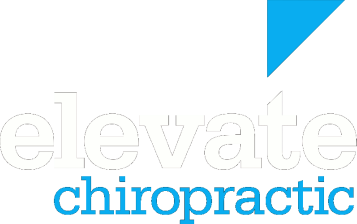
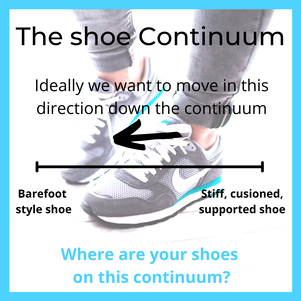
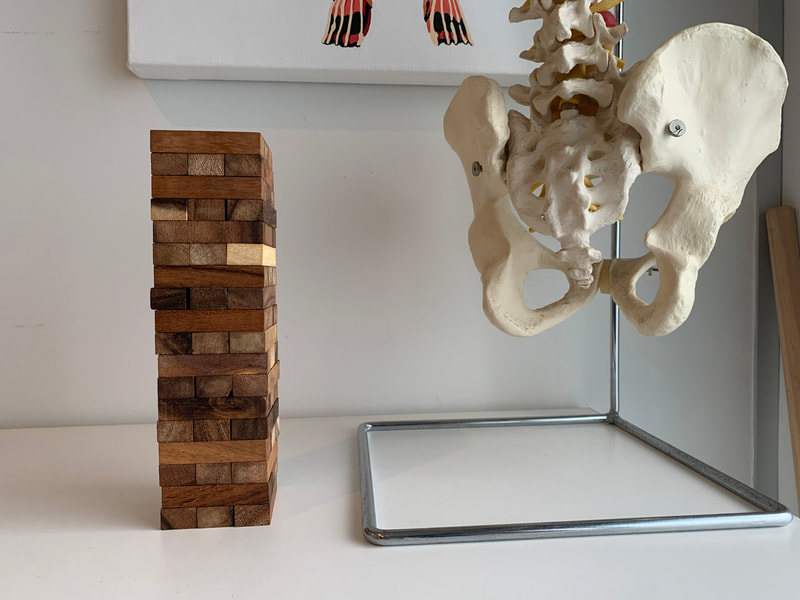
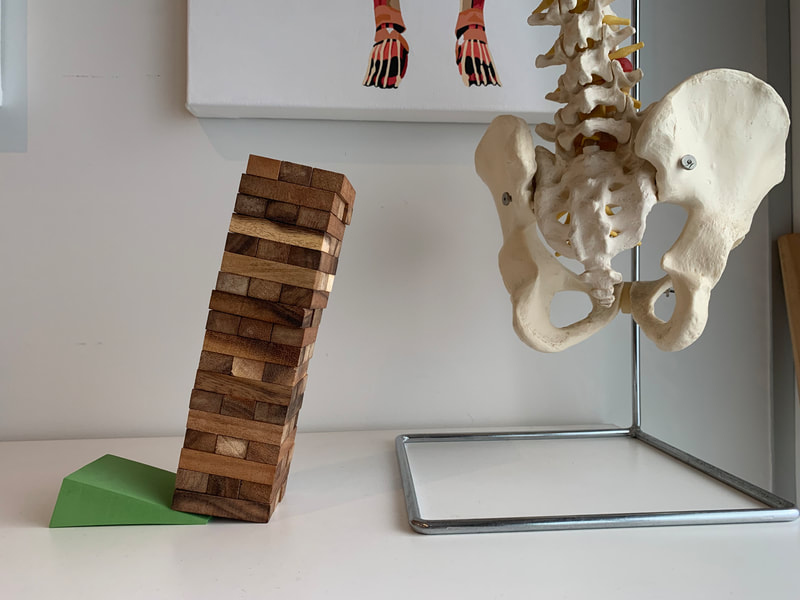
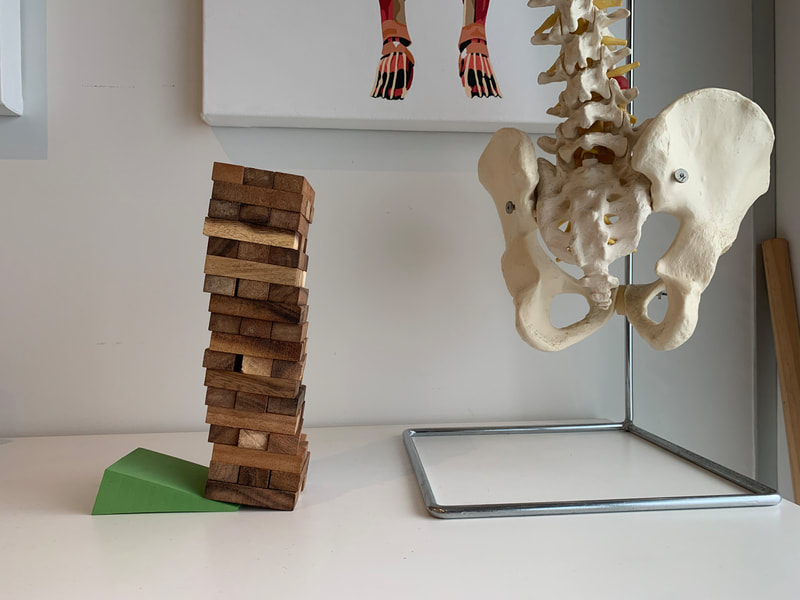
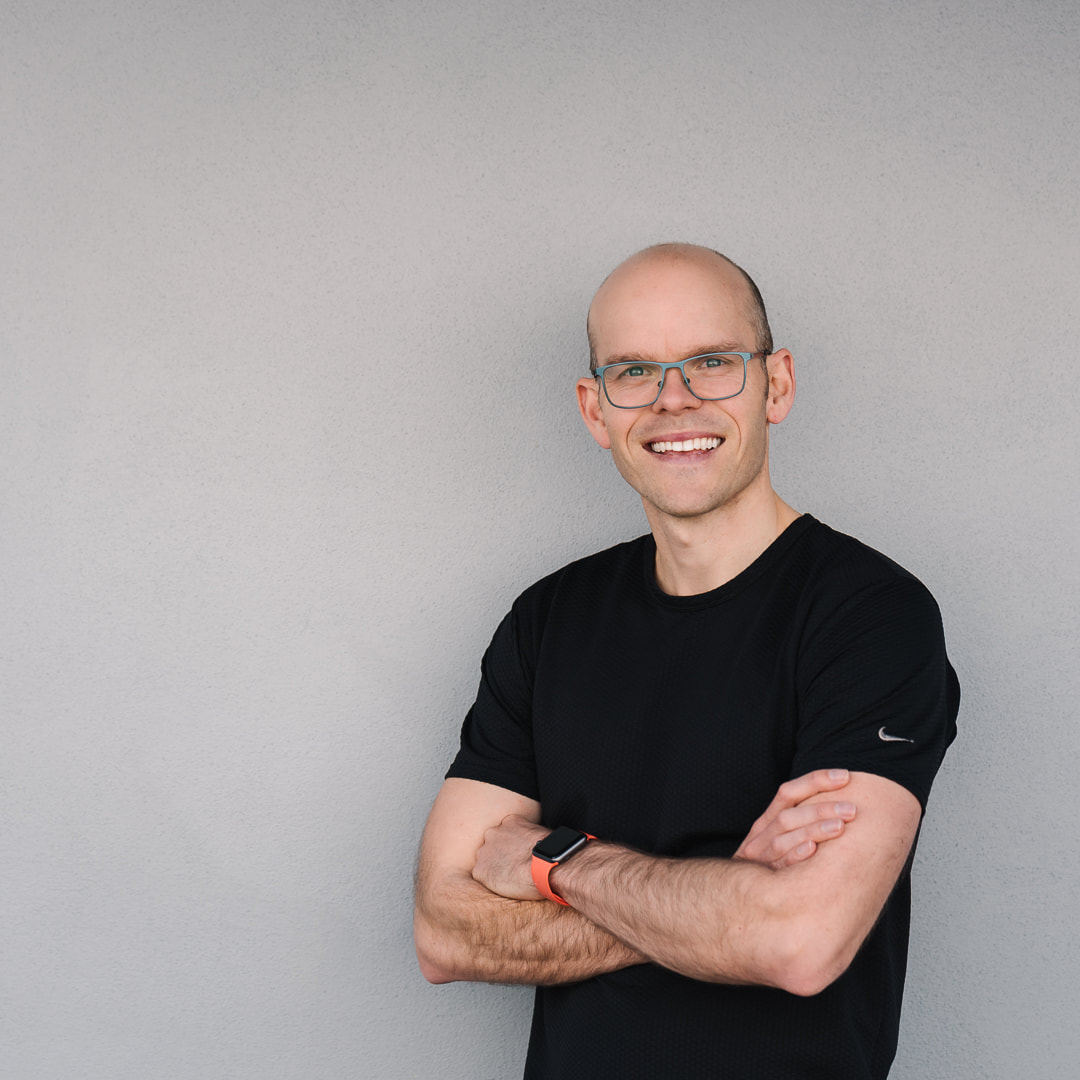

 RSS Feed
RSS Feed


